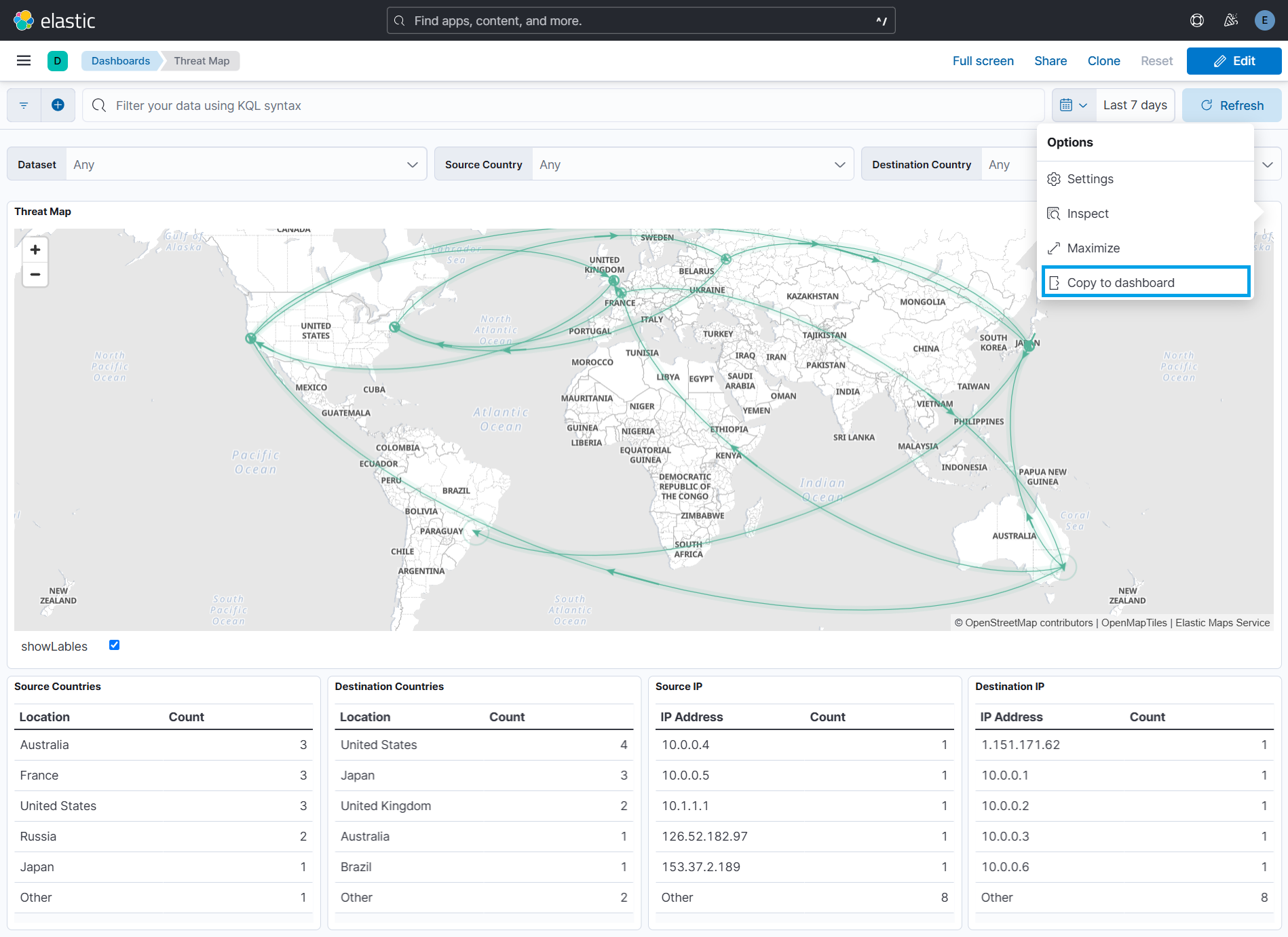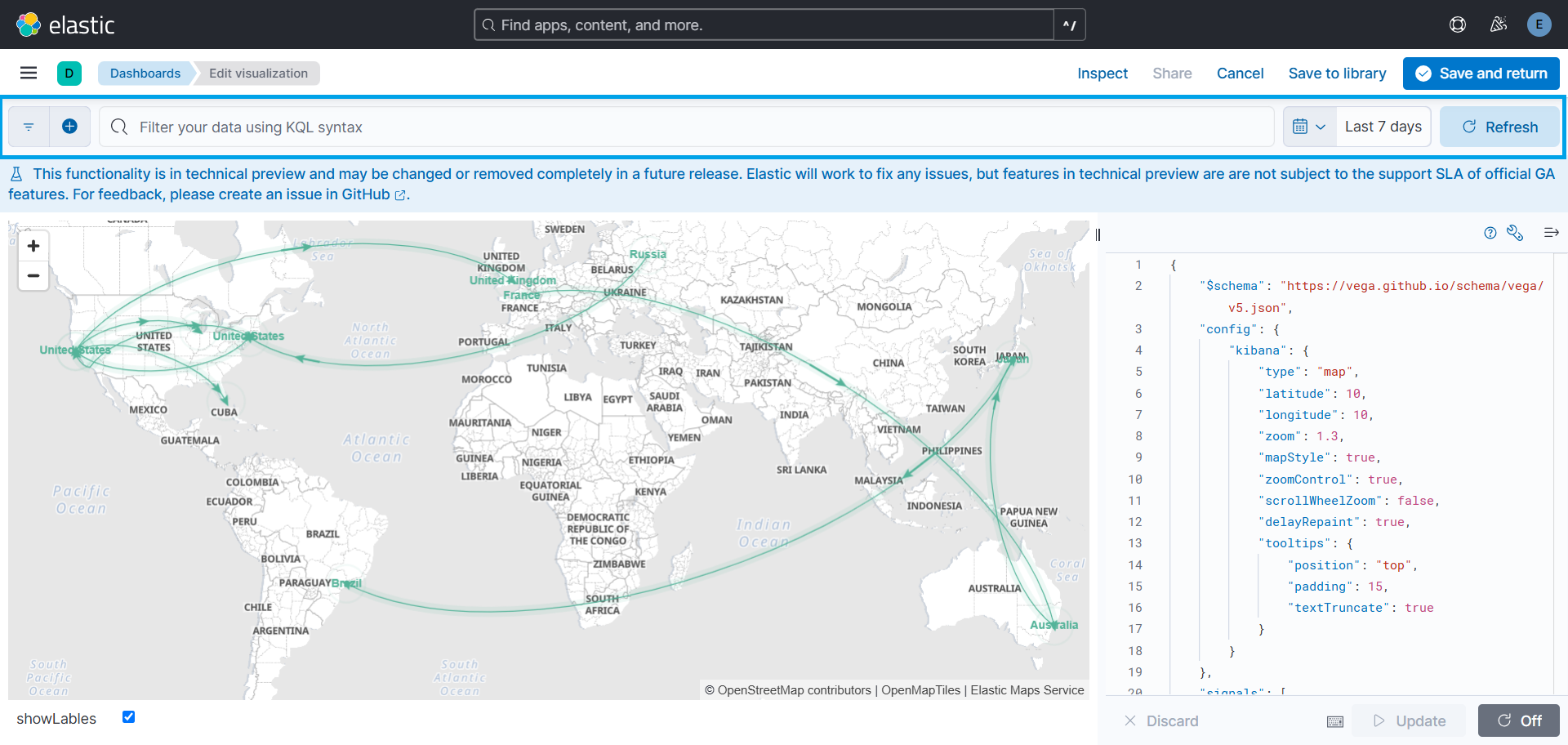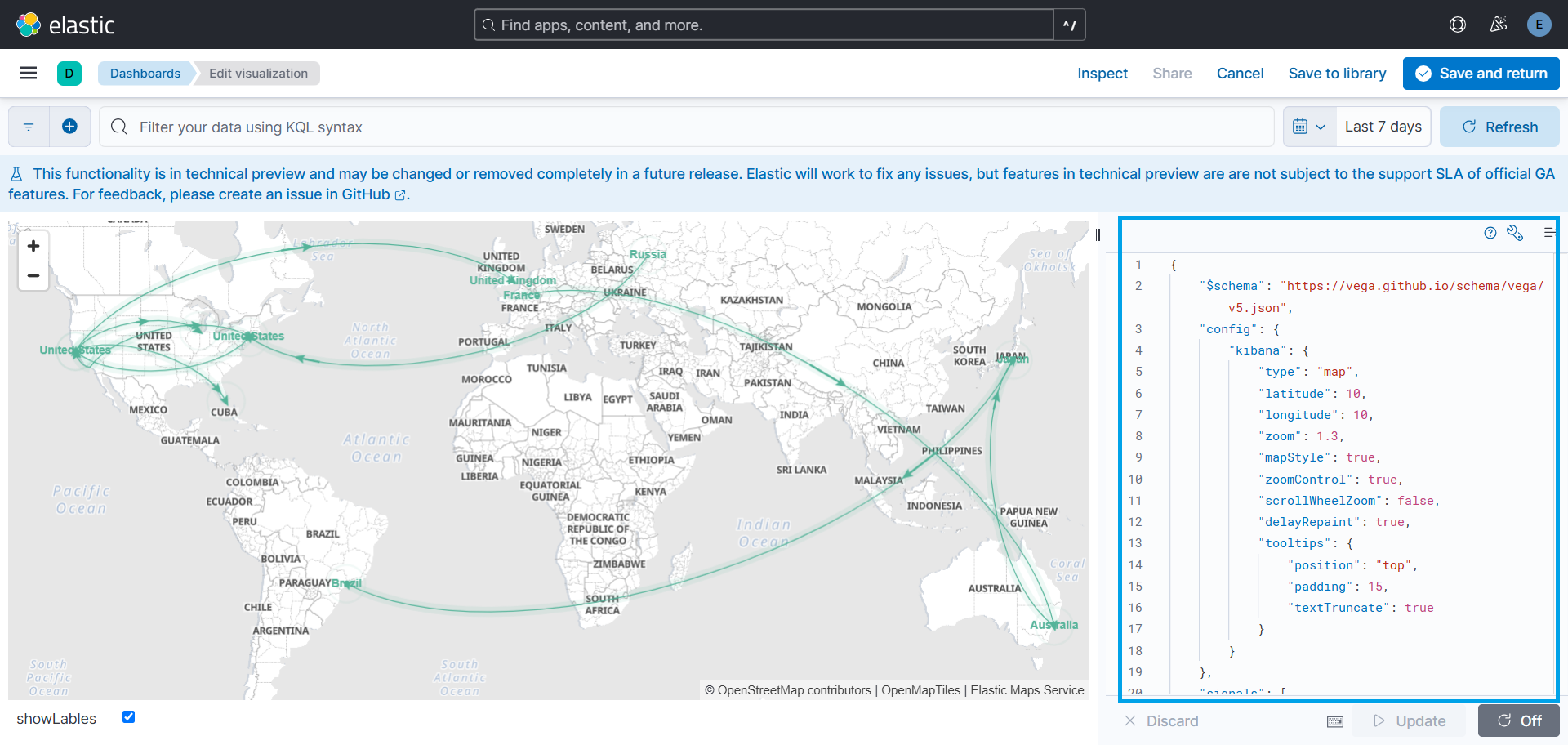- Elastic integrations
- Integrations quick reference
- 1Password
- Abnormal Security
- ActiveMQ
- Active Directory Entity Analytics
- Admin By Request EPM integration
- Airflow
- Akamai
- Apache
- API (custom)
- Arbor Peakflow SP Logs
- Arista NG Firewall
- Atlassian
- Auditd
- Auth0
- authentik
- AWS
- Amazon CloudFront
- Amazon DynamoDB
- Amazon EBS
- Amazon EC2
- Amazon ECS
- Amazon EMR
- AWS API Gateway
- Amazon GuardDuty
- AWS Health
- Amazon Kinesis Data Firehose
- Amazon Kinesis Data Stream
- Amazon MQ
- Amazon Managed Streaming for Apache Kafka (MSK)
- Amazon NAT Gateway
- Amazon RDS
- Amazon Redshift
- Amazon S3
- Amazon S3 Storage Lens
- Amazon Security Lake
- Amazon SNS
- Amazon SQS
- Amazon VPC
- Amazon VPN
- AWS Bedrock
- AWS Billing
- AWS CloudTrail
- AWS CloudWatch
- AWS ELB
- AWS Fargate
- AWS Inspector
- AWS Lambda
- AWS Logs (custom)
- AWS Network Firewall
- AWS Route 53
- AWS Security Hub
- AWS Transit Gateway
- AWS Usage
- AWS WAF
- Azure
- Activity logs
- App Service
- Application Gateway
- Application Insights metrics
- Application Insights metrics overview
- Application State Insights metrics
- Azure logs (v2 preview)
- Azure OpenAI
- Billing metrics
- Container instance metrics
- Container registry metrics
- Container service metrics
- Custom Azure Logs
- Custom Blob Storage Input
- Database Account metrics
- Event Hub input
- Firewall logs
- Frontdoor
- Functions
- Microsoft Entra ID
- Monitor metrics
- Network Watcher VNet
- Network Watcher NSG
- Platform logs
- Resource metrics
- Spring Cloud logs
- Storage Account metrics
- Virtual machines metrics
- Virtual machines scaleset metrics
- Barracuda
- BeyondInsight and Password Safe Integration
- BitDefender
- Bitwarden
- blacklens.io
- Blue Coat Director Logs
- BBOT (Bighuge BLS OSINT Tool)
- Box Events
- Bravura Monitor
- Broadcom ProxySG
- Canva
- Cassandra
- CEL Custom API
- Ceph
- Check Point
- Cilium Tetragon
- CISA Known Exploited Vulnerabilities
- Cisco
- Cisco Meraki Metrics
- Citrix
- Claroty CTD
- Cloudflare
- Cloud Asset Inventory
- CockroachDB Metrics
- Common Event Format (CEF)
- Containerd
- CoreDNS
- Corelight
- Couchbase
- CouchDB
- Cribl
- CrowdStrike
- Cyberark
- Cybereason
- CylanceProtect Logs
- Custom Websocket logs
- Darktrace
- Data Exfiltration Detection
- DGA
- Digital Guardian
- Docker
- DomainTools Real Time Unified Feeds
- Elastic APM
- Elastic Fleet Server
- Elastic Security
- Elastic Stack monitoring
- Elasticsearch Service Billing
- Envoy Proxy
- ESET PROTECT
- ESET Threat Intelligence
- etcd
- Falco
- F5
- File Integrity Monitoring
- FireEye Network Security
- First EPSS
- Forcepoint Web Security
- ForgeRock
- Fortinet
- Gigamon
- GitHub
- GitLab
- Golang
- Google Cloud
- Custom GCS Input
- GCP
- GCP Audit logs
- GCP Billing metrics
- GCP Cloud Run metrics
- GCP CloudSQL metrics
- GCP Compute metrics
- GCP Dataproc metrics
- GCP DNS logs
- GCP Firestore metrics
- GCP Firewall logs
- GCP GKE metrics
- GCP Load Balancing metrics
- GCP Metrics Input
- GCP PubSub logs (custom)
- GCP PubSub metrics
- GCP Redis metrics
- GCP Security Command Center
- GCP Storage metrics
- GCP VPC Flow logs
- GCP Vertex AI
- GoFlow2 logs
- Hadoop
- HAProxy
- Hashicorp Vault
- HTTP Endpoint logs (custom)
- IBM MQ
- IIS
- Imperva
- InfluxDb
- Infoblox
- Iptables
- Istio
- Jamf Compliance Reporter
- Jamf Pro
- Jamf Protect
- Jolokia Input
- Journald logs (custom)
- JumpCloud
- Kafka
- Keycloak
- Kubernetes
- LastPass
- Lateral Movement Detection
- Linux Metrics
- Living off the Land Attack Detection
- Logs (custom)
- Lumos
- Lyve Cloud
- Mattermost
- Memcached
- Menlo Security
- Microsoft
- Microsoft 365
- Microsoft Defender for Cloud
- Microsoft Defender for Endpoint
- Microsoft DHCP
- Microsoft DNS Server
- Microsoft Entra ID Entity Analytics
- Microsoft Exchange Online Message Trace
- Microsoft Exchange Server
- Microsoft Graph Activity Logs
- Microsoft M365 Defender
- Microsoft Office 365 Metrics Integration
- Microsoft Sentinel
- Microsoft SQL Server
- Mimecast
- ModSecurity Audit
- MongoDB
- MongoDB Atlas
- MySQL
- Nagios XI
- NATS
- NetFlow Records
- Netskope
- Network Beaconing Identification
- Network Packet Capture
- Nginx
- Okta
- Oracle
- OpenAI
- OpenCanary
- Osquery
- Palo Alto
- pfSense
- PHP-FPM
- PingOne
- PingFederate
- Pleasant Password Server
- PostgreSQL
- Prometheus
- Proofpoint TAP
- Proofpoint On Demand
- Pulse Connect Secure
- Qualys VMDR
- QNAP NAS
- RabbitMQ Logs
- Radware DefensePro Logs
- Rapid7
- Redis
- Rubrik RSC Metrics Integration
- Sailpoint Identity Security Cloud
- Salesforce
- SentinelOne
- ServiceNow
- Slack Logs
- Snort
- Snyk
- SonicWall Firewall
- Sophos
- Spring Boot
- SpyCloud Enterprise Protection
- SQL Input
- Squid Logs
- SRX
- STAN
- Statsd Input
- Sublime Security
- Suricata
- StormShield SNS
- Symantec
- Symantec Endpoint Security
- Sysmon for Linux
- Sysdig
- Syslog Router Integration
- System
- System Audit
- Tanium
- TCP Logs (custom)
- Teleport
- Tenable
- Threat intelligence
- ThreatConnect
- Threat Map
- Thycotic Secret Server
- Tines
- Traefik
- Trellix
- Trend Micro
- TYCHON Agentless
- UDP Logs (custom)
- Universal Profiling
- Vectra Detect
- VMware
- WatchGuard Firebox
- WebSphere Application Server
- Windows
- Wiz
- Zeek
- ZeroFox
- Zero Networks
- ZooKeeper Metrics
- Zoom
- Zscaler
Threat Map
editThreat Map
editVersion |
0.2.1 [beta] This functionality is in beta and is subject to change. The design and code is less mature than official GA features and is being provided as-is with no warranties. Beta features are not subject to the support SLA of official GA features. (View all) |
Compatible Kibana version(s) |
8.14.0 or higher |
Supported Serverless project types |
Security |
Subscription level |
Basic |
Level of support |
Elastic |
The Threat Map dashboard visualizes network traffic flow between regions using directed paths and animations. It includes arrows indicating direction and pulsing arcs at the destination.
The animations may increase browser CPU usage.
Prerequisites
editTo use the Threat Map dashboard, ensure the following:
-
Timestamp Field: Documents must contain a
@timestampfield for time-range filtering. -
GeoIP Processor: Apply a GeoIP processor to the IP field. The resulting document should contain
source.geoanddestination.geofields.-
Here is an example of an ingest pipeline that adds the geographical information to the
geofield based on theipfield.PUT _ingest/pipeline/geoip { "description" : "Add ip geolocation info", "processors" : [ { "geoip" : { "field" : "source.ip", "target_field" : "source.geo" } }, { "geoip" : { "field" : "destination.ip", "target_field" : "destination.geo" } } ] }
-
-
Data View: Use documents accessible via the
logs-*data view.
Data Format
editData is retrieved from Elasticsearch using the _all,*:_all index search endpoint. Ensure the following fields exist in each document:
| Field | Description | Required/Optional | Default Value |
|---|---|---|---|
|
Latitude of the source |
Required |
|
|
Longitude of the source |
Required |
|
|
Country name of the source |
Required |
|
|
IP address of the source |
Required |
|
|
Latitude of the destination |
Required |
|
|
Longitude of the destination |
Required |
|
|
Country name of the destination |
Required |
|
|
IP address of the destination |
Required |
|
|
Arc color |
Optional |
|
|
Determines if the arc is animated |
Optional |
|
|
Arc line thickness |
Optional |
|
|
Label at the source location |
Optional |
|
|
Label at the destination location |
Optional |
|
|
If true, the pulse begins at the source instead of the destination |
Optional |
|
These fields can be added or modified using
Custom pipeline. Read more.
Usage
editThe Threat Map visualization can be added to other dashboards in two ways:
1. Duplicate the Dashboard
edit- Click the Duplicate button in the top-right corner of the dashboard.
- A clone of the dashboard will be created for your customization.
2. Copy Visualization to a Dashboard
edit- Click the three dots in the top-right corner of the visualization and select Copy to Dashboard.
-
Choose one of the following options:
- Existing Dashboard: Select an existing dashboard from the dropdown, then click Copy and Go to Dashboard.
- New Dashboard: Create a new dashboard with the visualization.
[role="screenshot"]
edit
Visualizations
editThe Threat Map dashboard includes the following visualizations:
1. Map
edit- Framework: Utilizes Vega within Kibana.
-
Fields Used:
source.geo.location,destination.geo.location,color,animate,weight,source_label, anddestination_label. -
Customization:
- Click the three dots in the top-right corner and select Maximize to enlarge.
- The map adapts to Kibana’s dark/light mode automatically. Read more.
2. Panels
editIncludes four tables for analyzing traffic flow:
- Source/Destination Countries: Shows the top 5 countries with the highest traffic flow.
- Source/Destination IPs: Shows the top 5 IPs with the highest traffic flow.
Data in panels can be sorted by clicking on the Count column header.
Filtering Data
editGlobal Filters
edit- Use KQL (Kibana Query Language) in the query bar at the top of the dashboard.
- Adjust the time range using the selector in the top-right corner (default: last 30 minutes).
- Maximum records displayed: 10,000.
Visualization-Specific Filters
edit- Click the three dots in the top-right corner of the map and select Edit Visualization.
- Apply a filter using the query bar.
- Click Save and Return to apply changes.
[role="screenshot"]
edit
Customization Options
editThe following options are available for customization:
| Option | Description | Default Value |
|---|---|---|
|
Sets the EMS-layer for the map. |
|
|
Starting latitude of the map |
|
|
Starting longitude of the map |
|
|
Starting zoom level of the map |
|
|
If true, disables mouse wheel zoom to avoid accidental zooming |
|
To customize these options, click on Edit visualization from the dropdown in the top right corner of the visualization. A Vega editor will open, where you can modify the following configurations.
For additional customization options, see the Vega Kibana Guide.
[role="screenshot"]
edit
Changelog
editChangelog
| Version | Details | Kibana version(s) |
|---|---|---|
0.2.1 |
Bug fix (View pull request) |
— |
0.2.0 |
Enhancement (View pull request) |
— |
0.1.2 |
Bug fix (View pull request) |
— |
0.1.1 |
Bug fix (View pull request) |
— |
0.1.0 |
Enhancement (View pull request) |
— |
On this page